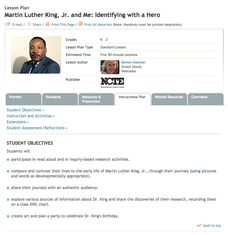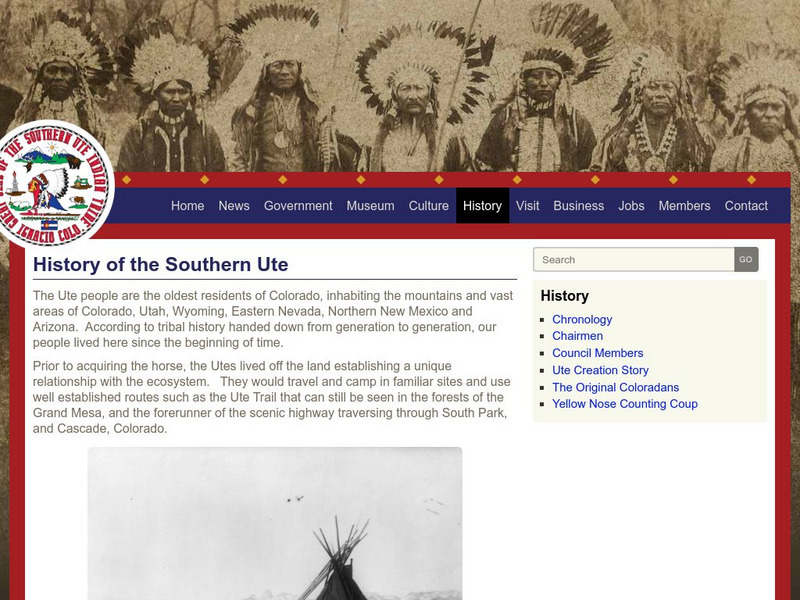ReadWriteThink
Martin Luther King, Jr. and Me: Identifying with a Hero
Here, young historians compare their early lives to that of Dr. Martin Luther King Jr.'s. They listen to a read aloud of a story by Dr. King's sister, and then write in the provided reflective journal template. Lastly, they share their...
Curated OER
Understanding by Design
Fourth graders examine the origins, structures, and functions of the Colorado government. In this understanding by design lesson, 4th graders explore the three branches of government. Students identify the roles of state leaders and...
Curated OER
Reconstruction: "Healing Wounds, Mending Fences"
Students examine material on the Civil War Era to develop an understanding of the major issues that were resolved. This six lessons unit provides a closer glimpse into our nation's political and ethical history.
Curated OER
We the Second Graders
Students study the history, development and meaning of the Constitution. They participate in a classroom simulation of the Constitutional Convention by writing a Preamble, developing a government, and writing a Bill of Rights for their...
Curated OER
Early Presidents and Politics
Students investigate early presidents of the United States. Students complete a series of lessons in which they research the contributions and political climate during the terms of U.S. presidents from George Washington to Andrew Jackson.
Curated OER
Mexican and American Views of Texas
Pupils study the territorial status of Texas in 1830, 1840, and 1846 and interpret an historical timeline. They develop a general statement of Mexican and American views of Texas.
Other
Southern Ute Indian Tribe: Southern Ute Tribal History
Provides links to pages discussing the history of the Southern Ute. Includes the following links: an introduction to the history of the Utes, chronology of Ute history, information on historical Ute leaders, maps of Ute territory, and...
University of California
The History Project: Ideas and Strategies of the Woman Suffrage Movement
Although the campaign for Woman Suffrage in the United States began with the Seneca Falls Convention of 1848, six decades later the leaders of the movement could claim victories in only four, sparsely-populated Western states, Colorado,...
University of California
The History Project: Ideas and Strategies of the Woman Suffrage Movement
The campaign for woman suffrage in the U.S. began with the Seneca Falls Convention in 1848. Sixty years later, however, women could vote in only four states: Colorado, Utah, Idaho and Wyoming. In 1910 the state of Washington voted nearly...







